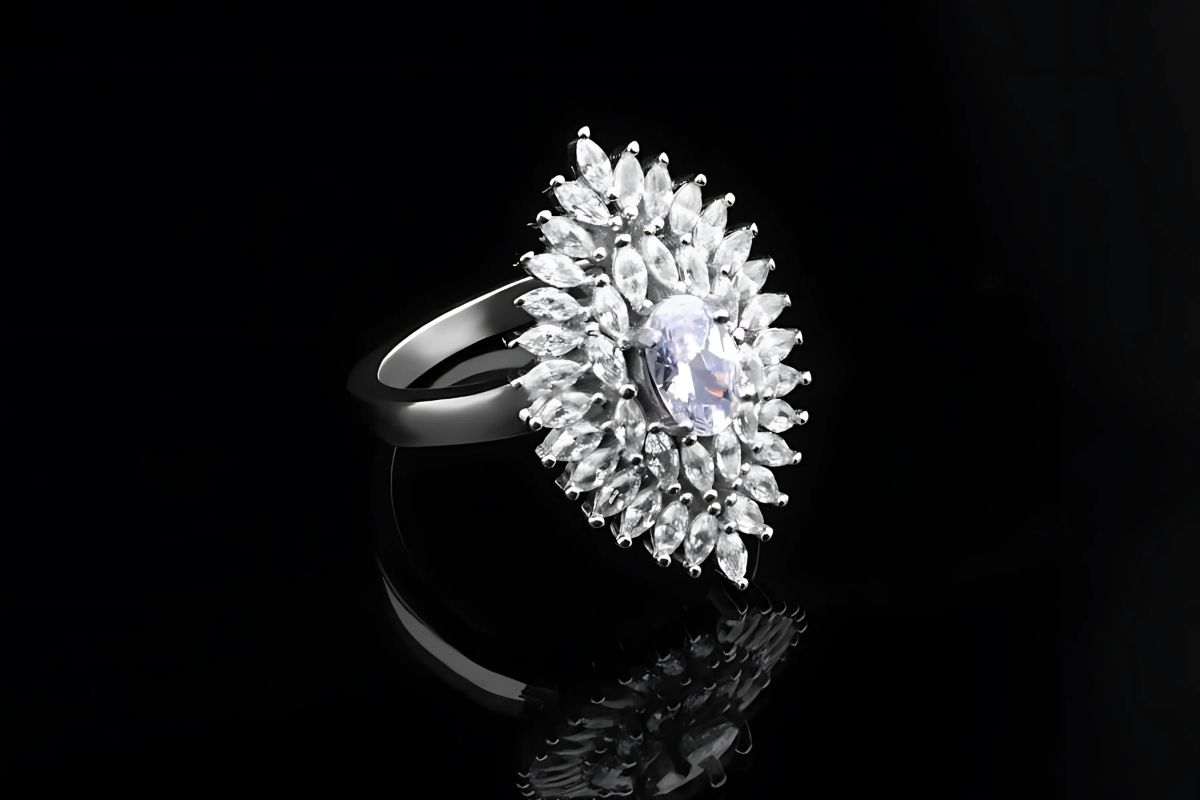Alexandrite Jewelry: How to Pick Between Real and Created Stones

Let’s cut to the chase: diamonds have their moment, but they’re not everyone’s cup of tea. More couples today want something with character—a gemstone that feels personal. Enter alexandrite. This isn’t just a pretty rock; it’s a little optical party trick. Step into bright daylight and it’s greenish-teal. Slip indoors under warmer lighting and suddenly it’s this moody reddish-purple. Two stones in one—that’s the real show-stopper, and exactly why alexandrite jewellery engagement-ring seekers can’t get enough of it.
Table of Contents
ToggleWhat Is Alexandrite?
At its heart, alexandrite is a rare variety of chrysoberyl. Its claim to fame? That wild colour-shift. Under sun or fluorescent light, you get those crisp greens. Under incandescent or candlelight, hello deep purples and reds. Think of it as a tiny chameleon on your finger. Whether grown in a lab or fished out of the earth, the effect is basically the same—and that’s pure magic.
Types of Alexandrite
Lab-Grown Alexandrite: The Smart Alternative
Don’t let “lab-grown” fool you into thinking it’s second-rate. Chemists mimic Mother Nature’s pressure-and-temperature recipe so precisely that even trained gemologists sometimes need fancy equipment to spot the difference. The perks? A much friendlier price tag, larger stones, more cut options—and zero mining footprint. If you care about sustainability (and who doesn’t these days?), going lab-grown is a smart, budget-wise move that still dazzles events like a wedding.
Natural Alexandrite: The Rarity Premium
Chasing unicorns? Natural alexandrite is about as close as it gets. Discovered in 1830s Russia, it’s since popped up in tiny pockets of Brazil, Sri Lanka and Africa—but always in minuscule quantities. Top-grade stones with a dramatic colour shift and flawless clarity come with collector-level price tags—often steeper than diamonds. If you’re after bragging rights and long-term value, and you don’t mind stretching your budget, a natural piece might be your dream.
Lab-Grown Vs. Natural: How to Choose
Spotting the Difference
For most of us, lab-grown vs. natural is a “don’t-know-don’t-care” situation—both dazzle with that green-to-red flip. Pro-grade gemologists look for inclusions (tiny internal quirks) and growth patterns under magnification. Lab versions tend to be super clean; natural ones usually carry little character marks. But on your hand? The average eye sees sparkle, not science.
Factors to Consider
It really boils down to your priorities:
- Budget: Lab-grown stretches your money further.
- Rarity & Value: Natural stones are unique and may appreciate over time.
- Ethics & Environment: Skip mining altogether with a lab-grown piece.
- Aesthetic Variations: Both are stunning, but natural stones sometimes offer unpredictable charm.
Ultimately, trust your instinct and choose the story that resonates with you most.
Capucinne offers a gorgeous lineup—both natural and lab-grown—hand-crafted to fit your style, values and budget. Their team walks you through every option without pressure, so you end up with a piece that’s truly you. Plus, they include a worry-free warranty and complimentary resizing to keep your ring perfect for years to come.
Bottom Line
Whether you love the epic back-story or you just want that chameleon sparkle, alexandrite is anything but ordinary. Make it yours. After all, your ring should be as unique as your love story.
Published by Carol Jones
My aim is to offer unique, useful, high-quality articles that our readers will love. Whether it is the latest trends, fashion, lifestyle, beauty , technology I offer it all View more posts
Recent Post
Golf Resorts In Greece – Something’s Changing

Rediscover Luxury and Nature at Hotel Xcaret Mexico






